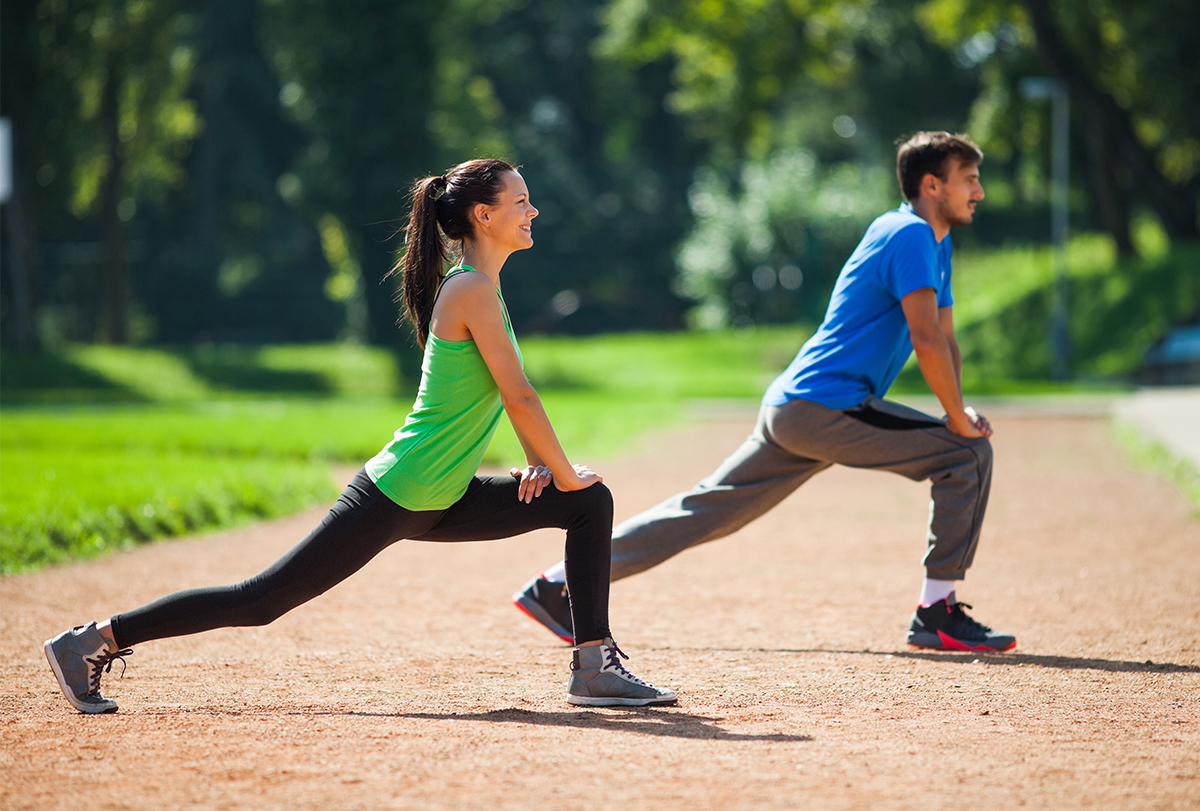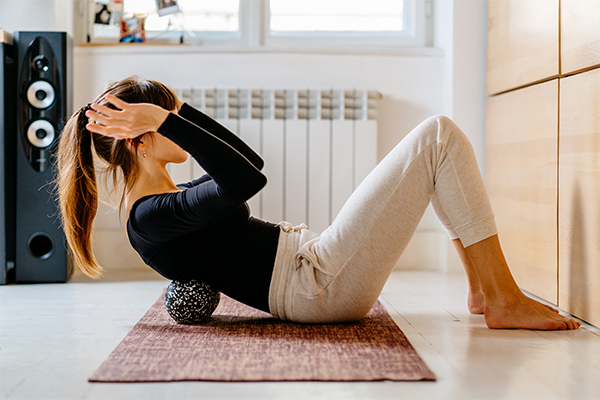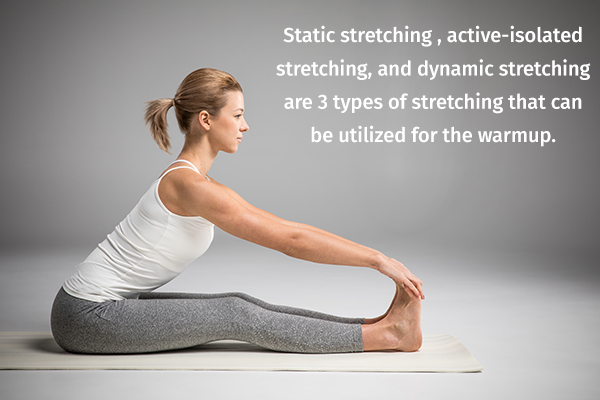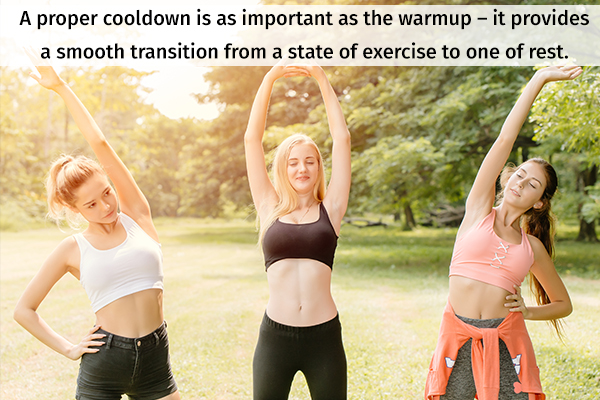In this article:
Regular exercise is necessary in order to create a change within the structure of the muscles. This change occurs in existing muscle fibers and does not actually create additional muscle fibers.

A balanced, combined program of endurance training and resistance training is ideal for general health and to ensure an appropriate supply of blood and oxygen to the tissues.
According to the World Health Organization (WHO), children aged 5–17 should engage in 60 minutes of moderate- to high-intensity activity on a daily basis. (1)
Also according to WHO, adults aged 18 and older should generally engage in at least 150 minutes of moderate-intensity activity throughout the week (50 minutes, 3 times per week), or in at least 75 minutes of high-intensity activity throughout the week (approximately 40 minutes, 2 times per week), or in any combination of mixed-intensity exercise. (2)
Importance of a Good Warmup Routine
A good warmup should be considered an essential element of any workout and, thus, should be practiced every time. Benefits of warming up include:
- Increases heart and respiratory action, which improves oxygen delivery to the muscles (3)
- Raises the temperature of the body’s tissues, which improves range of motion
- Allows time to mentally prepare for an activity, it be general exercise or a competitive event
Parts of a Warmup Routine
There are 2–3 components to a complete warmup segment of any workout program. They include the following:
1. Self-Myofascial release

Self-myofascial release (SMR) is the process of utilizing an implement such as a foam roller, myo-release stick, or myo-release ball to improve extensibility of the muscle tissue. (4)
To use the SMR process, you need to work the implement along the muscle at a very slow pace, identifying any sensitive or painful area. Hold pressure on the sensitive area for 30 seconds or until the pain is reduced, and then continue on to the next spot.
Areas of the body where SMR can be used include the calves, thighs, buttocks, and upper back. SMR can take 5–10 minutes to complete.
2. Cardiorespiratory exercise

A general cardiorespiratory warmup should last up to 10 minutes. (5) The mode of this component is a matter of personal preference, but the activity should be low to moderate intensity; you should feel as though you are working but can still hold a conversation.
A cardiorespiratory warmup can take place on a machine, such as a treadmill (walk or slow jog), elliptical, stair climber, or row machine.
3. Stretching

Virtually every area of the body can be stretched. Stretching helps improve range of motion so that movement during the workout portion is not limited by tightness in a particular area, which can result in injury. (6)
In general, there are 3 types of stretching that can be utilized for the warmup.
a. Static stretching
Static stretching is a good technique for those beginning a new exercise program, for those recovering from an injury, and for a cooldown. It is also excellent for a simple “stretch day.”
Static stretching is the form of stretching in which a muscle is taken to the point of tension and held there for 20–30 seconds. Stretching the various areas of the body using this technique should take 5–10 minutes.
Basic stretching exercises include calf stretch, kneeling hip flexors stretch, inner thigh stretch, straight-leg hamstring stretch, and wall chest stretch.
b. Active-isolated stretching
Active-isolated stretching is ideal for those who already have a solid background in exercise and are in reasonably good condition. Many exercises utilized for static stretching, mentioned in the previous section, are good candidates for active stretching.
It involves taking the joint through its range of motion in a moderate, repeated fashion. The portion of the movement that places a stretch on the muscle is held for 1–2 seconds, and 5–10 repetitions are performed for 1–2 sets.
Stretching the various areas of the body using this technique should take 3–5 minutes.
c. Dynamic stretching
Dynamic stretching is ideal for those who are capable of maintaining good form without movement compensation due to lack of strength or stamina. It involves taking the joint through its range of motion, but it also utilizes force production and momentum.
Dynamic stretching is vigorous and can be used in place of the cardiorespiratory component. Choose 3–10 dynamic stretches, according to your fitness or athletic goals.
These exercises can include prisoner squats, multiplanar lunge, single-leg squat touchdown, tube walk, and medicine ball lift-and-chop. Perform 1 set of 10 repetitions for each exercise.
Stretching the various areas of the body using this technique should take 5–10 minutes.
Importance of a Cooldown Routine

A proper cooldown is as important as the warmup – it provides a smooth transition from a state of exercise to one of rest. A cooldown removes wastes from the tissues, minimizes soreness, and reduces the risk for light-headedness. (7)
Men and women can perform all of the same exercises for their warmup or cooldown. The only variations that might occur are for individuals training for a specific activity.
Keep in mind that when there is tightness in one muscle, it is likely that there is an opposing muscle that is weakened and needs more strength training. Also, when evaluating the risk of an exercise, remember that the benefit should always outweigh the risk.
Final Word
A good warmup routine before a workout helps loosen your stiff joints, ligaments, and muscles for the demanding exercises that lay ahead.
Plunging straight into a strenuous exercise from a state of rest can give your unprepared body a jerk and cause undue injuries. This gentle preworkout regimen also gradually builds your heart and lung capacity for the long haul.
Plus, it triggers your body’s natural heat dissipation mechanism into action. Thus, your body starts shedding the excess body heat to cool down properly before you move to the hardcore stuff. This keeps your body from overheating and shutting down as you scale up the intensity and duration of your exercise routine.
There is no standard warmup that will suit everyone, and you will have to experiment with different exercises and intensities to see what works for you. Also, it may take some getting used to, so don’t give up at the first sign of distress. Keep trying new things and practicing until you become comfortable with a specific routine.
- Was this article helpful?
- YES, THANKS!NOT REALLY


